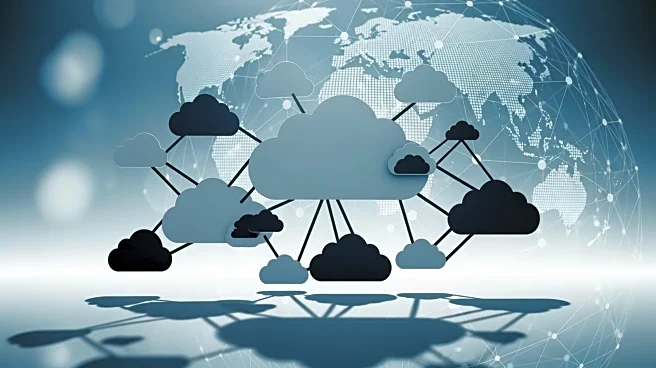What's Happening?
In late October 2025, Amazon Web Services (AWS) experienced a significant outage lasting 16 hours, affecting over 2,500 companies and services worldwide. The disruption impacted various sectors, including
banking, gaming, and e-commerce, and even affected Amazon's own services such as Ring cameras and Alexa. The root cause was identified as a DNS resolution bug in AWS's US-East-1 region, which led to a cascading failure across its network. Engineers managed to fix the DNS bug within hours, but the recovery process required manual intervention due to overloaded systems.
Why It's Important?
The AWS outage highlights the vulnerability of global internet infrastructure, as many services rely heavily on cloud providers like AWS. The estimated cost of the outage was around $2.5 billion in lost productivity, underscoring the economic impact of such disruptions. This incident serves as a reminder of the need for robust cloud architecture and multi-region redundancy to prevent similar occurrences in the future. Industry experts are calling for changes to ensure resilience and avoid single points of failure in cloud systems.
What's Next?
Following the outage, industry experts are urging businesses to adopt multi-region architectures and multi-cloud backups to enhance resilience. AWS is expected to implement improved safeguards and procedures to prevent future incidents. The outage has sparked discussions about the need for better risk modeling and potential regulation of cloud services, given their critical role in various sectors. Companies affected by the outage may reevaluate their cloud strategies to mitigate risks and ensure continuity.
Beyond the Headlines
The incident has raised questions about the reliance on automation and AI in managing cloud infrastructure. AWS's automated systems were partly responsible for the outage, highlighting the need for human oversight and rigorous testing of automated changes. The event has also prompted discussions about the potential need for external oversight of cloud providers, as their services are increasingly seen as critical infrastructure.











